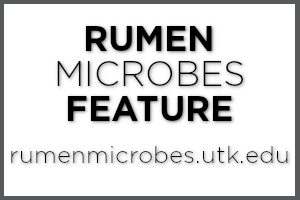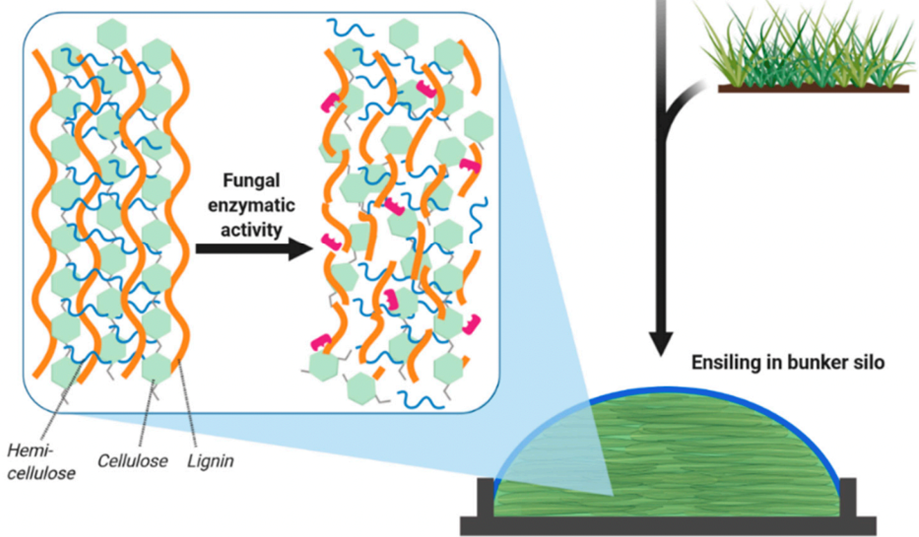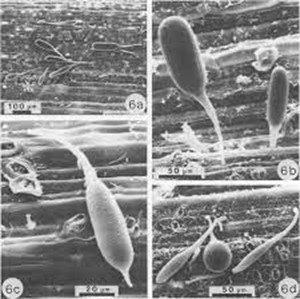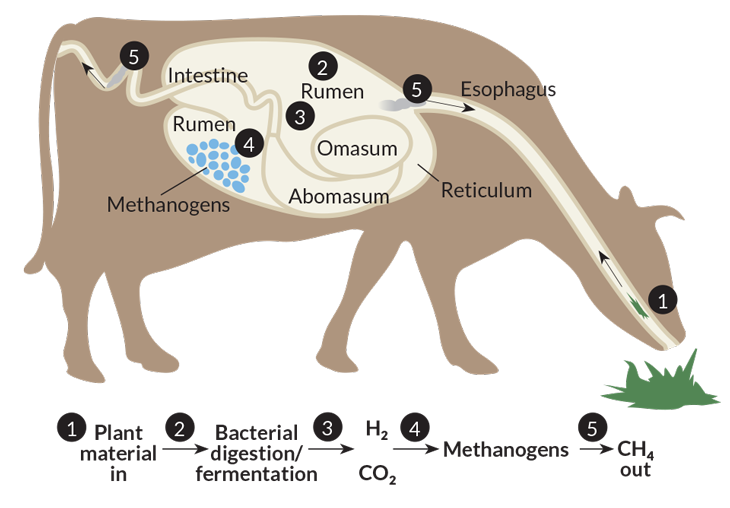
The microbiome is the community of microorganisms (such as fungi, bacteria, and viruses) that exist in a particular environment. The rumen microbiome enables ruminant animals to utilize plant-derived feed sources by processing them through microbial-driven fermentation. Rumen microbes play an essential role in the initial development of the rumen, immunity, and nutritional functions of the host. The composition of the rumen microbiome can be impacted by diet, environment, health, genetics, and age of the animal and can change in response to changes outside of the rumen.
The microbe of the month for July is the entire rumen microbiome! On this occasion, we will learn its general characteristics and functions to better understand its importance for rumen activity and the animal.
Click the image hotspots to learn more about the rumen microbiome.
This interactive image was created by Gabbi Martin.
(Photo Courtesy of the UT Beef and Forage Center )

Learn More

The rumen microbiome comprises bacteria, protozoa, archaea, and fungi. Each has different functions. Firmicutes and Bacteroidetes bacterial phyla are the most abundant and are responsible for fiber degradation and vitamin b synthesis. Image courtesy of Noble Research Institute.
Learn More

Fungi produce enzymes that can target and break down the lignin in cell walls. Image courtesy of Hartinger et al. 2021.
Learn More

Protozoa are the largest in size of the rumen microbes and make up ~50% of the biomass of the rumen microbiome. Protozoa promote prokaryotic diversity by fungal and bacterial predation, reduce nitrogen utilization efficiency, and assist in plant carbohydrate breakdown. Image courtesy of Bauchop, 1979.
Learn More

Archaea make up a small percent of the rumen microbiome and are most referred to as methanogens. They utilize readily available hydrogen and carbon dioxide from fermentation to produce methane in the anaerobic environment of the rumen. Image courtesy of E. Otwell.
Follow this link to view all of the interactive presentations for the Rumen Microbes series.